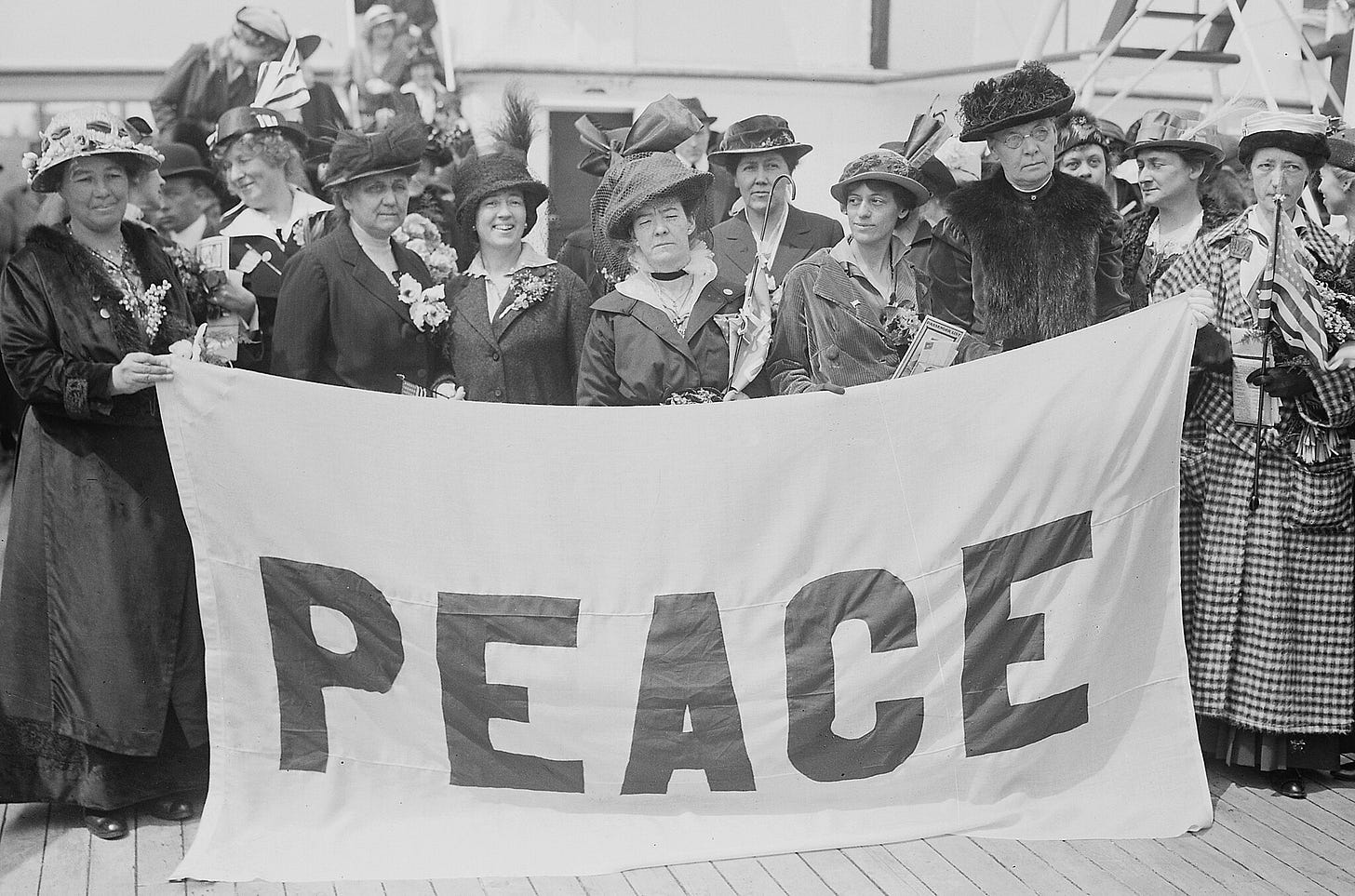“He is free to evade reality, he is free to unfocus his mind and stumble blindly down any road he pleases, but not free to avoid the abyss he refuses to see.” — Alice O’Connor, 1961
1915 — Women Convene to Seek Peace
public domain image from wikimedia commons
On this date in 1915, after The Great War (later known as World War 1) had begun but before the United States had entered the fray, the International Congress of Women (also called the Women’s Peace Conference) convened in the Hague, Netherlands with the dual purpose of seeking world peace and suffrage for themselves (specifically, the right to vote).
The first goal remains elusive for humans to achieve, but the second has been widely achieved.
An average of 100 delegates each from twelve countries (including Austria-Hungary, Belgium, Britain, Germany, Italy, Poland, and the United States) attended. Their idea for “continuous mediation” (diplomacy) was for neutral nations to submit proposals to those at war or on the verge of war to prevent or bring an end to using violence to solve disagreements between nations.
This idea of theirs might be loosely compared to arbitration, which is used (for one example) in major league baseball when a team and a player cannot agree on a salary for the player: both sides submit what they consider to be a fair amount, and an arbitrator then selects the offer which is closest to what he (privately) determined to be the “perfect” amount. In other words, if the arbitrator feels the player should get $10 million per season, and the team submits $1 million and the player submits $100 million, the team will win (as one million is closer to 10 million that 100 million is). On the other hand, if the team submits $1 million and the player submits $15 million (or even $18 million), the player wins the arbitration. Thus, both sides are motivated to be reasonable in their estimation of what the player should get. Low-balling (no pun intended) will not be to the advantage of the number, neither will inflating the figure benefit the player (and his agent).
The measures endorsed at the end of the convention were to set up an international court (a Supreme Court for the entire world) and a body they called The Society of Nations (apparently similar to the soon-to-be-implemented League of Nations, which was replace by the United Nations once the League failed to prevent World War 2 and was thus dissolved).
The group pushed for international disarmament and the self-determination of Nations. And, of course, the women wanted to “get the vote” (to receive political enfranchisement).
The Congress also instituted the Women’s International League for Peace and Freedom (WILPF). Jane Addams of Chicago (Hull House), the leader of the U.S. delegation to the convention, was named as the first president of WILF); it is still in existence today, with offices in Geneva, Switzerland and New York City.
Over the next two months (May and June, 1915), thirty delegates to the convention tried to talk sense into the heads of State of those nations killing each other’s soldiers and citizens, but to no immediate avail. However, the proposals set forth the WILPF convention are used today as guidelines for many diplomatic negotiations between sword-rattling and bomb-dropping, missile-firing (etc.) nations.
The WILPF also tried to interest U.S. President Woodrow Wilson in using his influence to help mediate and end the raging global conflict. He was at least superficially sympathetic at first, but ultimately did a 180 on his campaign slogan “He Kept Us Out of the War” by preparing the Nation for and then promoting its direct involvement in the first World War.
public domain image from wikimedia commons
Questions: Do you think there will ever be world peace? If so, how will it be achieved? What is the major roadblock to achieving peace?
Read about “The Secret Lives of Kids” here.








